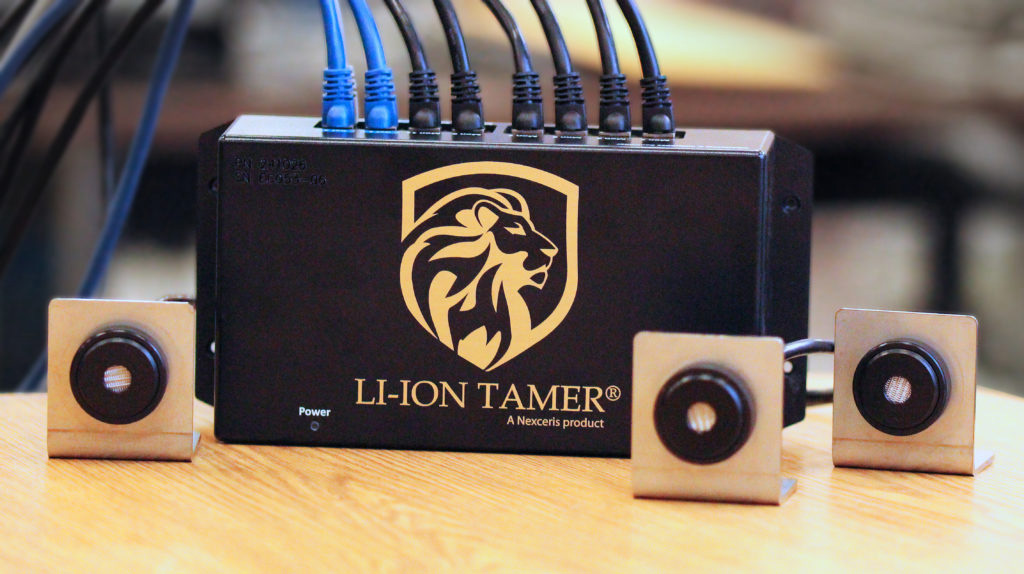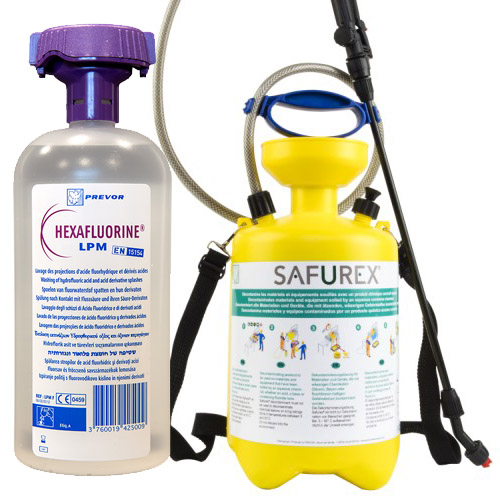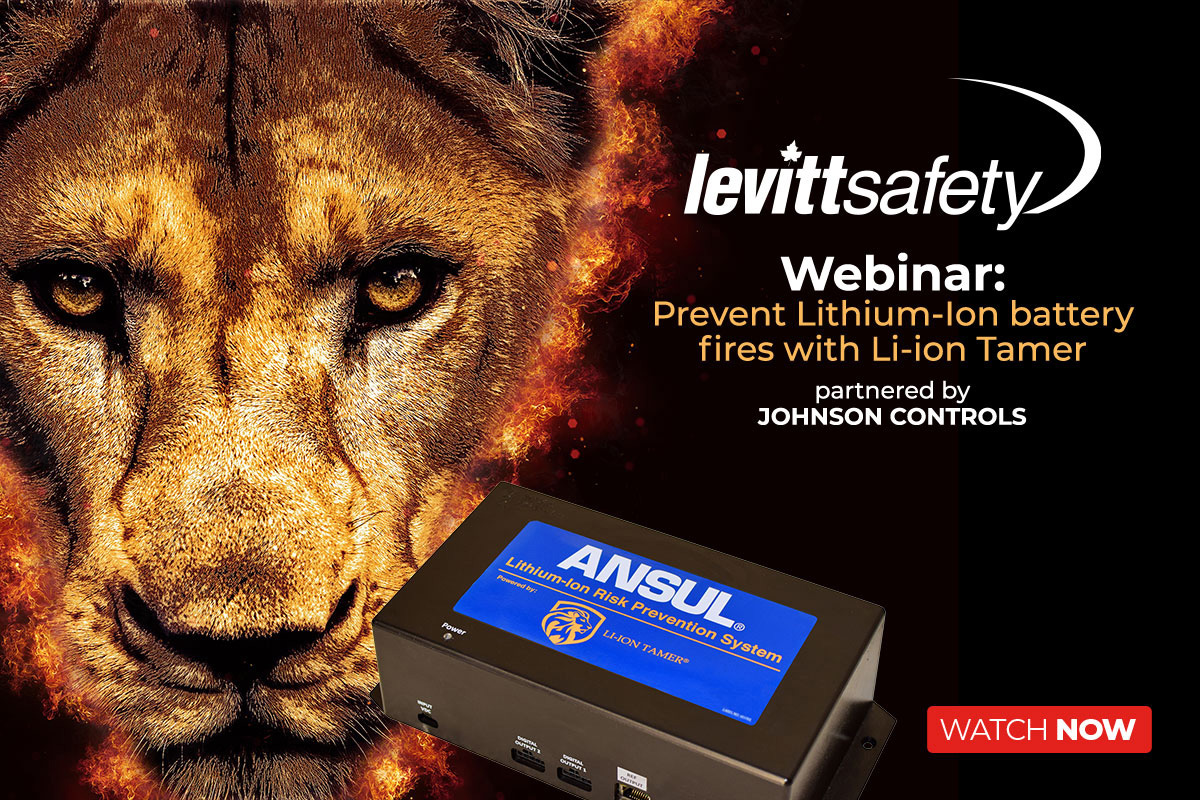Li-Ion Tamer: Lithium Ion Battery Monitoring System
Talk to a safety specialist
Li-ion Tamer mitigates lithium-ion battery fires
Lithium-ion batteries are found in many common products including hand tools, mobile equipment and renewable energy storage systems (ESS).
While this technology is great for the solution it provides, lithium-ion batteries present a high risk of danger when they malfunction and ignite. Early detection of battery failure substantially reduces the risks associated with fires and chemical release. That’s where Li-ion Tamer comes in.
Li-ion Tamer (pronounced as 'lion tamer') is a new product from Ansul designed to make batteries safer. It detects a battery malfunction long before it becomes a fire.

There are four stages to a lithium-ion battery fire:
- Battery abuse
- Off-gas generation
- Smoke
- Fire
Most competitive products are only able to alert to a battery cell failure during the smoke or fire stages. This is often too late as you have passed the critical “golden time” of early detection.
Li-ion Tamer is able to give you advanced diagnosis during the off-gas stage, which happens before thermal runaway occurs.
What is off-gas generation?
When a battery cell begins to fail, electrolytes break down and generate gas. This gas creates pressure and is released from the cell as off-gas.
This advanced warning gives you time to prevent or mitigate a battery failure which otherwise could become a fire.
Stages of a lithium-ion battery failure
Lithium-ion batteries can fail for many reasons including:
- overcharging
- overheating
- excessive discharging, and
- battery management system failure.
Stage 1: Initial abuse factor
A lithium-ion battery failure starts because of abuse. It could be electrical, thermal or mechanical abuse. A battery management system, which monitors the physical characteristics of a battery, can detect this stage of failure.
The amount of time it takes for a battery to enter the next stage depends on the type of abuse. A mechanical failure, like a puncture, can cause immediate progress. If there was thermal or electrical abuse, it can take 30 minutes to several hours for a battery to enter the second stage.
Stage 2: Off-gas generation
In a lithium-ion battery failure, the off-gassing stage starts to happen before a battery has experienced complete critical failure. This stage is called the “golden time,” and it’s during this period that Li-ion Tamer kicks into action.
Battery management systems are not always practical, like when shipping or storing batteries.By taking preventative steps during the off-gassing stage, you are able to prevent battery failure from occurring at all.
Li-ion Tamer is able to detect off-gas which gives an early indication of battery failure. The system can also close contacts and stop energy flow that would otherwise spread cell decomposition between batteries.
Li-ion Tamer has a built-in suppression component that uses inert gas to stabilize the battery and prevent a flammable build-up.
Mitigating actions taken during the smoke detection phase are ineffective and result in a fire.
Stage 3: Smoke
The battery failure continues to progress if you don’t take mitigating action after off-gas generation.
Mitigating actions taken during the smoke detection phase are ineffective and result in a fire.
When smoke and heat have started, it’s an indication that the battery is rising rapidly towards complete thermal runaway.
At this point, smoke would begin to escape from the battery cell and fill the area.
There isn’t much time between this stage and fire. Most battery-fire detection products rely on detecting smoke, unfortunately, smoke provides very little warning of lithium-ion battery failures.
Stage 4: Fire
Once there is smoke, the battery cell is very unstable. It can experience fire or rapid disassembly at any moment.
At this point, the cell is generating its own heat and energy. The cells have metal oxide electrodes which add energy and fuel to the battery fire.
In a lithium-ion battery pack with several cells, there is a greater chance of fire spreading from cell to cell.
One failing cell can spread its failure to other cells in the pack, creating a very large and destructive event.
Why choose Li-ion Tamer:
When you choose Li-ion Tamer, you add an extra level of protection for your staff, your business and your brand.
Li-ion improves the safety of your energy storage system by greatly reducing the possibility of off-gas events and fires.
Levitt-Safety is the premier distributor for Li-ion Tamer in Canada, we can provide you with literature, product demos and pricing.
WHAT ARE THE CHEMICAL RISKS?
HF Chemical splashes:
Suppose hydrofluoric acid is exposed to human skin and eye tissue. In that case, the individual could experience short and long-term health consequences due to its corrosive action and the toxicity caused by the rapid and painful effect on the body’s calcium and magnesium levels that can lead to cardiac arrest.
Chemical decontaminant:
HF splashes or vapour created by the reaction of water with damaged lithium-ion battery cells can contaminate surfaces and materials and put emergency responders at risk.
WHAT IS THE SOLUTION?
Exposures involving hydrofluoric acid require immediate attention. Rinsing the affected area as quickly as possible with water or Hexafluorine® solution is necessary.

HEXAFLUORINE solution applied as per protocol will:
• Provide the important mechanical removal effect helping to rinse away excess chemicals from the skin/eye tissue surface.
• Will limit the penetration of HF by creating a reverse osmotic flow helping to pull the corrosive H+ ions and toxic F- ions back to the tissue surface.
• Bind the dangerous corrosive and fluoride ions helping to quickly restore the victim’s physiological tissue pH and pF levels.
The use of Hexafluorine® solution immediately following an HF exposure will help limit the penetration and reaction with human skin/eye tissue, thus helping to prevent burn lesions and other health complications from occurring.
The 5-litre portable shower is designed to manage skin exposures, and the 500 mil eye wash bottles (one bottle per eye) are designed to manage eyetissue exposures. Always use the entire contents of the containers and apply within sixty seconds of exposure.

Note: The application of calcium gluconate gel may be used following the application of Hexafluorine® solution, especially in delayed rinse (beyond one minute).
SAFUREX
Concentrated amphoteric chemical neutralizer that can be used on all chemical agents.
• Stops the aggressiveness of acidic and basic chemicals, neutralizing them and helping to improve worker safety.
• Color indicator helps identify acidic vs basic chemicals.
• Its chelating abilities enable it to bind fluoride ions in hydrofluoric acid (HF), making it non-toxic.
• Non-hazardous to humans and the environment.
To learn more about the stages of a failing lithium-ion battery, download our full product brochure. Learn more.
